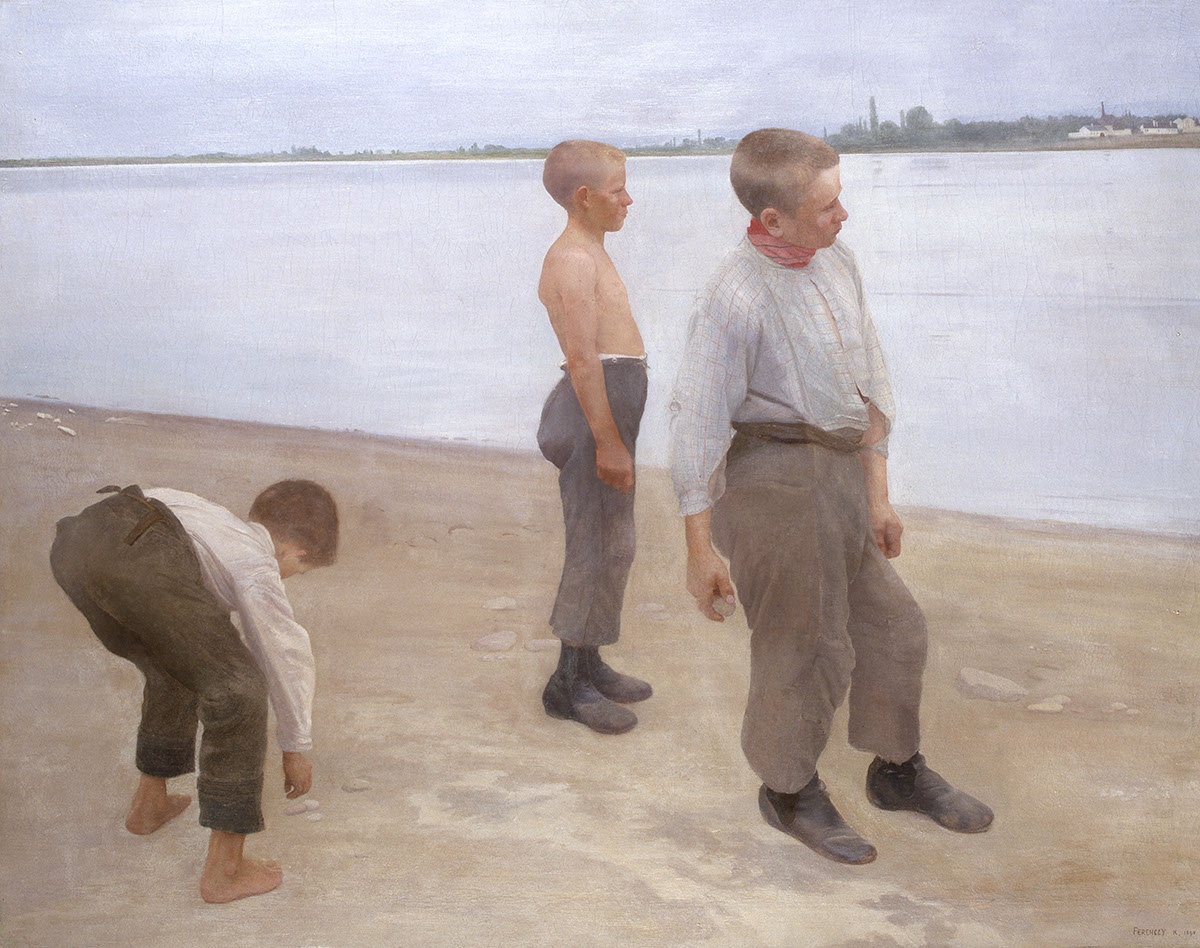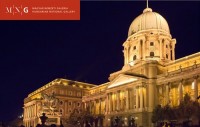After years of studying abroad, Károly Ferenczy settled with his family in Szentendre, close to Budapest. As he attended Simon Hollósy’s art school in Munich, he was drawn under the influence of Jules Bastien-Lepage and made his first works at home in his style. He picked his subjects from everyday life showing the figures in ordinary activities. In the spirit of the painting traditions of Munich, he depicted genre scenes on his canvases, but he deliberately avoided stories with a point to them.Based on previous reproduction, it is certain that there were only two figures instead of three in the painting before 1930. Given the nature of Ferenczy’s perfectionist, always revising and repainting method, we can certainly assume that he revised the first variant back in 1890, erasing the figure leaning forward from the composition. For the time being, we have no knowledge of how and when the elaborately covered third boy became visible again, but since the painting got into public collection in 1938, it became well known in this this form with three figures.
en

